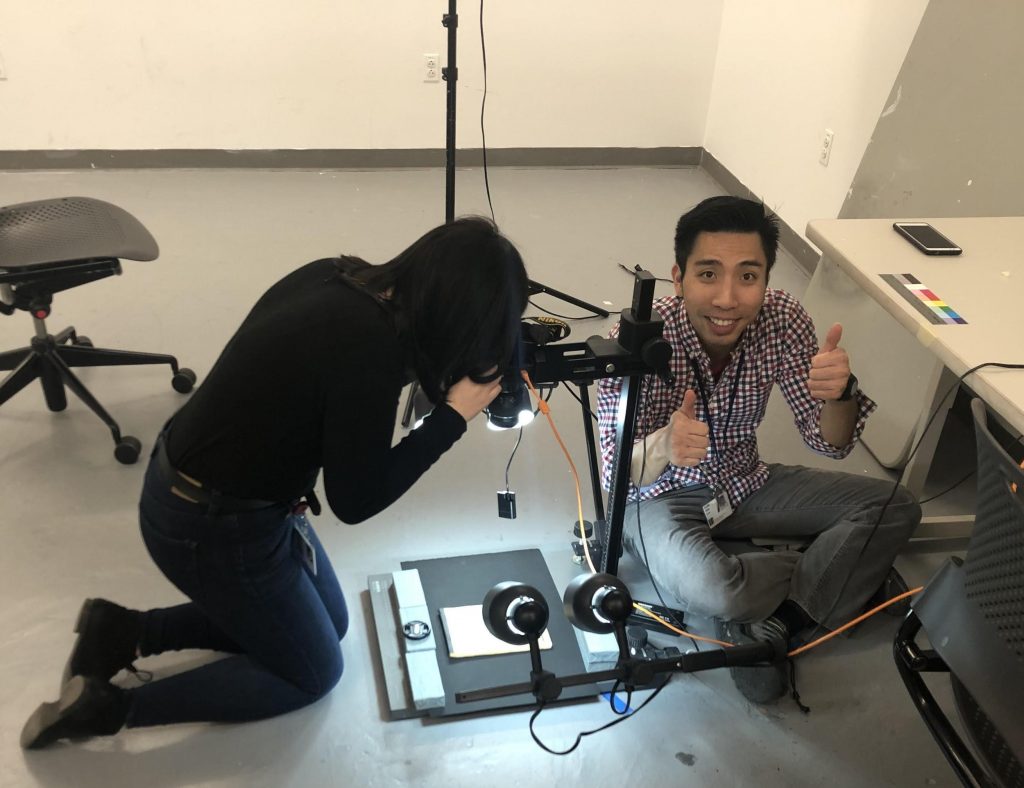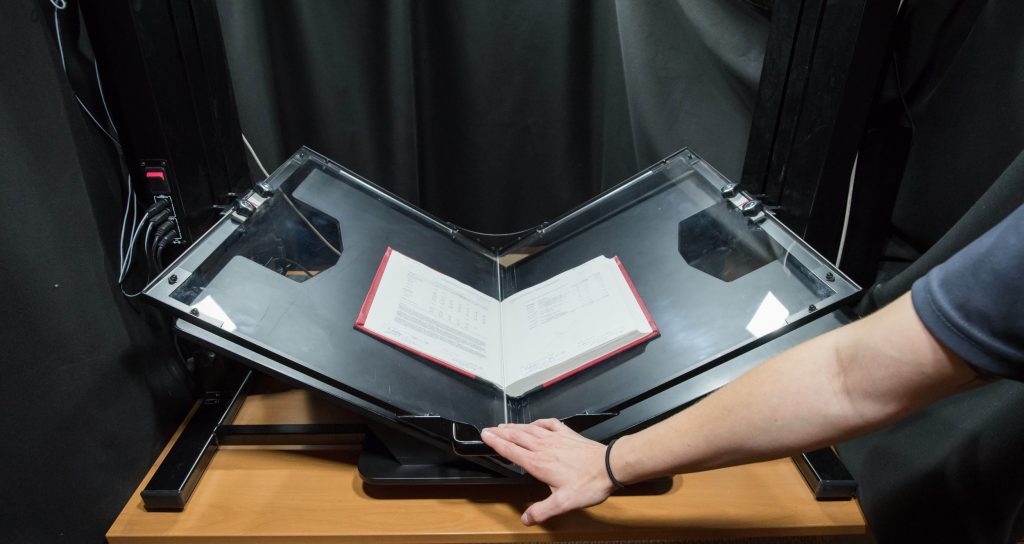Contributed by Jahna Auerbach, Assistant Archivist for the John Rhoden papers

Archival collections can range from standard mediums such as papers, photographs, and books to less standard materials like large pieces of art, framed documents, photo albums, etc. Most of the time we are able to digitize items on a flatbed scanner, but other times we need to utilize a copy stand and digital camera setup.

Example of a bound volume in a flatbed scanner. 
Example of a bound volume in a flatbed scanner.
Objects that usually need to be digitized with a camera are bound materials (books). This is because the only way to lay a book flay on a scanner would involve breaking the spine. At PAFA we had to capture John Rhoden’s sketchbooks and exhibition catalogs with a digital camera.

When photographing books, it is important to avoid distortion of the pages, have even lighting, eliminate any shadows that could occur, and ensure everything is in focus.

To accomplish this, we mounted a digital camera onto a copy stand so that it is oriented straight down. A copy stand is a very sturdy alternative to a tripod. We have lights on either side of the book and include the Kodak Color Control Patches in each frame to standardize proper black and white values. Without a ‘V cradle,’ pages can easily look distorted because the pages have a natural curve. To eliminate distortion we photograph the books with the page we want to capture flat while holding the book at a 90-degree angle.
Then Hoang, Kelin and I had to work together. I handled the camera settings and focus, Hoang helped keep the pages flat and straight, and Kelin monitored the images in Lightroom.

What may be surprising is that, to save time, we first capture the recto (the front side) of each page, and then the verso (the backside) of each page. In post-production I will have to edit and merge these images so that a viewer can “flip” through the book digitally.
As tedious as photographing can be, it was a fun change of pace to work together, which is something we haven’t been able to do now that we are primarily cataloging and digitizing records on the flatbed scanner. Now, all we have to do is digitally process the images and we have digital images of a book! The finished digital book will be available as a part of the John Rhoden papers, accessible through PAFA’s Digital Archives.
This project, Rediscovering John W. Rhoden: Processing, Cataloging, Rehousing, and Digitizing the John W. Rhoden papers, is funded in part by the National Endowment for the Humanities, a federal agency.
ABOUT THE NATIONAL ENDOWMENT FOR THE HUMANITIES
Created in 1965 as an independent federal agency, the National Endowment for the Humanities supports research and learning in history, literature, philosophy, and other areas of the humanities by funding selected, peer-reviewed proposals from around the nation. Additional information about the National Endowment for the Humanities and its grant programs is available at: www.neh.gov.